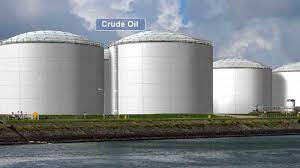On Tuesday, oil prices remained stable near $80 per barrel as the US announced plans to release up to 50 million barrels of oil from its reserves to help cool the market.
The loan and sale from the reserves were done in tandem with other strategic reserve releases by China, India, South Korea, Japan, and the United Kingdom, according to the White House.
However, after years of lowering investments and a good worldwide recovery from the COVID-19 epidemic, analysts believe the effect on pricing will be short-lived.
Brent crude futures were down 12 cents, or 0.15 percent, at $79.58 a barrel at 1304 GMT, after falling as low as $78.55 earlier. WTI crude futures in the United States were down 50 cents, or 0.65 percent, at $76.25.
The release of 50 million barrels from the US Strategic Petroleum Reserves (SPR) is expected to begin in mid-to-late December, according to US President Joe Biden’s administration.
In addition, India said it will release 5 million barrels of oil from its strategic reserves.
Although the US’s 50 million barrel release exceeded market forecasts, 18 million barrels were already planned for sale, according to UBS analyst Giovanni Staunovo.
“The headline number is big, but the specifics tell a different story,” Staunovo added.
“SPR releases are a tool for covering transitory production disruptions, but they are ineffective in addressing imbalances generated by a lack of investment and still rising demand.”
The Organization of Petroleum Exporting Countries (OPEC) and its allies, notably Russia, have so far refused to produce extra oil in response to repeated appeals from Washington.
Suhail Al-Mazrouei, the UAE’s energy minister, said on Tuesday that raising the UAE’s own supplies to global markets makes “no sense” at the moment, adding that technical data obtained ahead of an upcoming OPEC+ meeting in December pointed to an oil surplus in the first quarter of 2022.
Prices have fallen below $80 a barrel after reaching a three-year high of more than $86 on Oct. 25 amid talk of a coordinated release and the potential impact on energy demand from the fourth wave of COVID-19 cases in Europe.


















